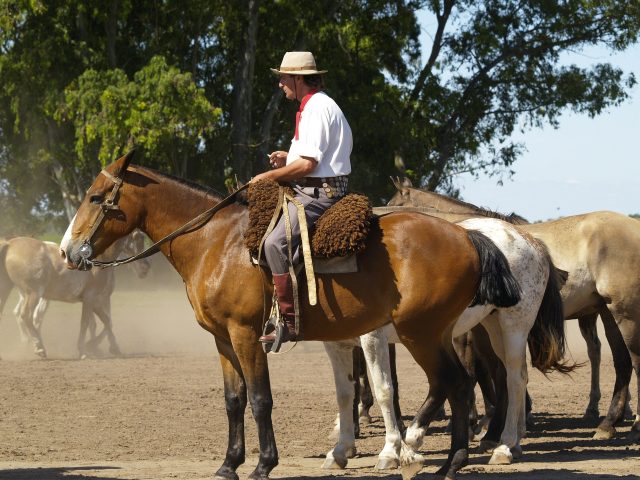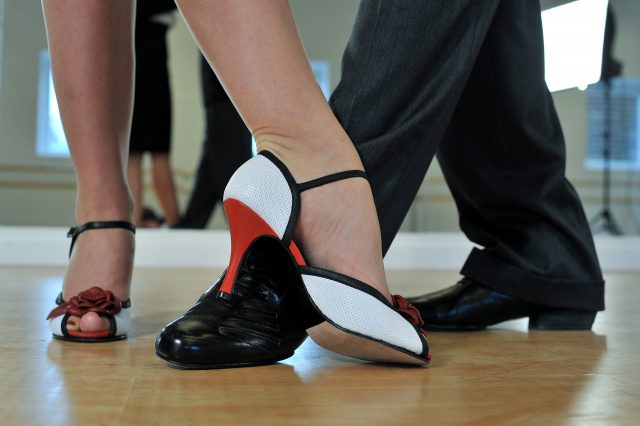From Gauchos to Tango: Fascinating Facets of Argentina Culture
ABOUT
At Our Whole Village, we plan meaningful vacations for families who want to create lifelong memories and show their kids the world in a more conscious and intentional manner.
WORK WITH US
We help families take meaningful vacations so that they can escape everyday life, show their kids the world and make lifelong memories - with care, confidence and peace of mind.
THE BEST FAMILY VACATIONS BY AGE
Your (free) guide to the top travel destinations for families with babies, teens and everyone in between.
DOWNLOAD NOW
ABOUT US
January 22, 2020
Argentina culture represents a melting pot of influences from indigenous people and European immigrants primarily from Spain and Italy. There are many fascinating ways to explore this diverse heritage during a family vacation. The capital of Argentina, Buenos Aires, has even inspired the nickname, “little Europe.” Here, you’ll find three architectural styles that would look equally at home in Paris or Rome: neoclassical (or neo-renaissance), art nouveau, and art deco.
Ready to learn more? Let’s dive into interesting facts about Argentina culture for family travelers.
Architecture and Buenos Aires Culture
From the 1880s through the 1920s, Buenos Aires enjoyed a boom as one of the world’s richest, fasting growing cities. A thriving national economy bolstered this growth. Through 1930, Argentina outgrew both Australia and Canada in total income, per capita income, and population. What drove this economic expansion? Exploitation of the country’s fertile lowlands, known as the Pampas.
People immigrated to Argentina in droves. At one point, 30 percent of the country’s population was foreign-born. The vast majority hailed from Italy. Today, an estimated 62.5 percent of the population (30 million Argentines) claim at least some Italian ancestry. They brought with them European architectural styles. These styles found their way into the different neighborhoods where immigrants settled. As you walk around the city, you’ll notice many distinct examples of this structural diversity.

© David Diaz | Pixabay
Among the most impressive buildings in Buenos Aires is the National Congress at the end of Avenida de Mayo. Other noteworthy structures include the Palacio Barolo (designed by Mario Palanti after Dante’s Divine Comedy) and the Teatro Colón built in 1857. The Teatro Colón boasts a luxurious interior complete with Italian marble, Venetian mosaics, and French stained glass. That said, it’s a challenge to narrow Argentina’s exquisite architecture down to just a few buildings.
Indigenous People and Gauchos
History and colonization were not kind to the indigenous people of the central Pampas region of Argentina. During the Spanish conquest, colonizers enslaved or killed countless residents. Today, just two percent of the nation’s total population identify as indigenous. They include Guarani Indians concentrated in the northeast and Andeans located in the northwest. Yerba mate is one of the most famous indigenous contributions to the culture of Argentina.
The symbol of the gaucho or cowboy remains deeply rooted in Argentina’s national identity. Traditionally, they were mestizo (men of mixed European and indigenous descent). These horsemen lived nomadically tending cattle in the central grasslands.
Prevalent figures during the 18th and 19th centuries, their costume included loose trousers, a poncho, and a wide-brimmed hat. While you can still find gauchos today, their traditional lifeways have been impacted by technology and population expansion.

© ArtTower | Pixabay
Argentina’s Most Famous Dance: Tango
Besides architectural marvels, Buenos Aires is the birthplace of Argentine Tango. First performed in its streets during the 19th century, Tango represents a fusion of Caribbean, African, and European dance and music forms. Over the decades, it has become one of Argentina’s most famed cultural exports, noted especially for its stunning footwork.
Unlike Tango, as danced in other parts of the world, the Argentine version is interpretive and improvisational. It requires an intuitive bond between the performers. Several styles of Argentine Tango exist, including:
- Salon Tango
- Milonguero Tango
- Tango Nuevo
- Neo-Tango
Salon Tango works well when dancing in spacious halls and ballrooms. Milonguero Tango suits small, crowded dance floors. Tango Nuevo combines moves from Salon and Milonguero Tango while adding new steps. This style lends itself to the music of Astor Piazzolla, famed Argentine composer and bandoneon player. Neo-Tango is a fusion of many different styles. These styles include Rumba, Salsa, and Swing.

© Bernard Verougstraete | Pixabay
Argentina Culture for Family Travelers
Argentina culture is vibrant and richly influenced by the immigrants who made it their home, particularly in the 19th century. As a result, you’ll find stunning examples of European architecture throughout the capital.
You’ll also find dance halls and streets that come to life in the evenings with passionate Argentine Tango. Or take a trip to the Pampas where you can watch gauchos work the land. Find out more about our Argentina Family Vacation, a spectacular journey into the heart of this South American gem.
At Our Whole Village, we create transformational trips for curious families who want to create lasting memories while making a difference. We’re here to help you and your family experience the world, its peoples, and its cultures. Contact us today to learn more about the unforgettable journeys that we handcraft for adventure-seeking families just like yours.
OUR SERVICES
HOME
COPYRIGHT © OUR WHOLE VILLAGE 2021
DESIGN BY GIRLBOSS DESIGNER | CUSTOMIZED BY ALEX COLLIER DESIGN
about
TRAVEL SERVICES
DESTINATIONS
BLOG
PLAN A TRIP
FREE TRAVEL GUIDE
TERMS AND CONDITIONS
hello@ourwholevillage.com
+1 305 432 2612